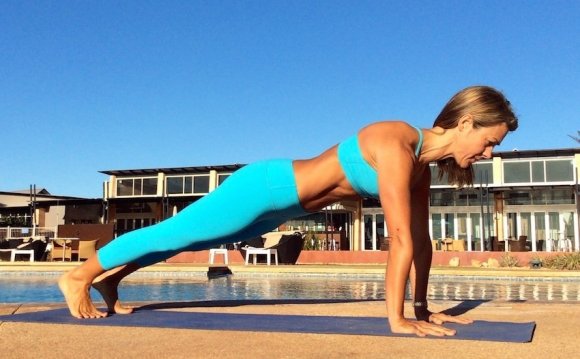
 LEARN MERMAID POSE HERE One-Legged King Pigeon Pose or Eka Pada Rajakapotasana and Mermaid Pose both evolve from Pigeon Pose, which is why they both begin the same way and require the ability to safely bend the back.
LEARN MERMAID POSE HERE One-Legged King Pigeon Pose or Eka Pada Rajakapotasana and Mermaid Pose both evolve from Pigeon Pose, which is why they both begin the same way and require the ability to safely bend the back.
Mermaid shifts off to the side, and serves as a great starting point before entering One-Legged King Pigeon, which will feel more centered.
While these variations work well together, you don’t have to do them in succession. In fact, focusing on just one per practice can keep you from overusing the same muscle groups. Below are some tips to help you warm up properly before executing these variations.
1. Shoulders
Shoulders work as synergists or movers for the chest muscles (pectorals) and back muscles, specifically the latissimus dorsi. Prepare for this pose with a sequence full of heart openers (Bridge and Wheel variations) and side body lengthening postures (Trikonasana).
 2. Hips, Psoas, and Quadriceps
2. Hips, Psoas, and Quadriceps
The iliopsoas and quadricep muscle groups work together to stretch the back leg during One-Legged King Pigeon, while the front leg primarily stretches the external rotators as well as the muscles and tendons that run along the lateral side of the leg.
Ideally, both hips face the front of the mat to ensure balance in the spine. Note, however, that squaring off the hips forcefully may create pain and even injury in the lumbar spine, sacroiliac joint, knees, and ankles.
Each practitioner has his or her own unique bone structure and range of motion in the hip socket, so listen to your body and heed any pain as a warning that you’ve gone too far. Consult your teacher for assistance in finding your “ideal” alignment.
Some helpful preparation poses: Half Lotus and Half Frog Pose.
3. Ankle and Knee Stability
The joints in the lower part of the back leg during these poses must move together. You don’t need to contort yourself. Practice patience, and if you feel the need to twist your knee or sickle your ankle too far off to either side, you may risk spraining a ligament.
The joints do not need to stretch: they provide stability and structure. Sensation in your joints usually indicates overstretching and is an indication to stop. Practice building strength and stability in the Warrior Poses and Chair Pose.









